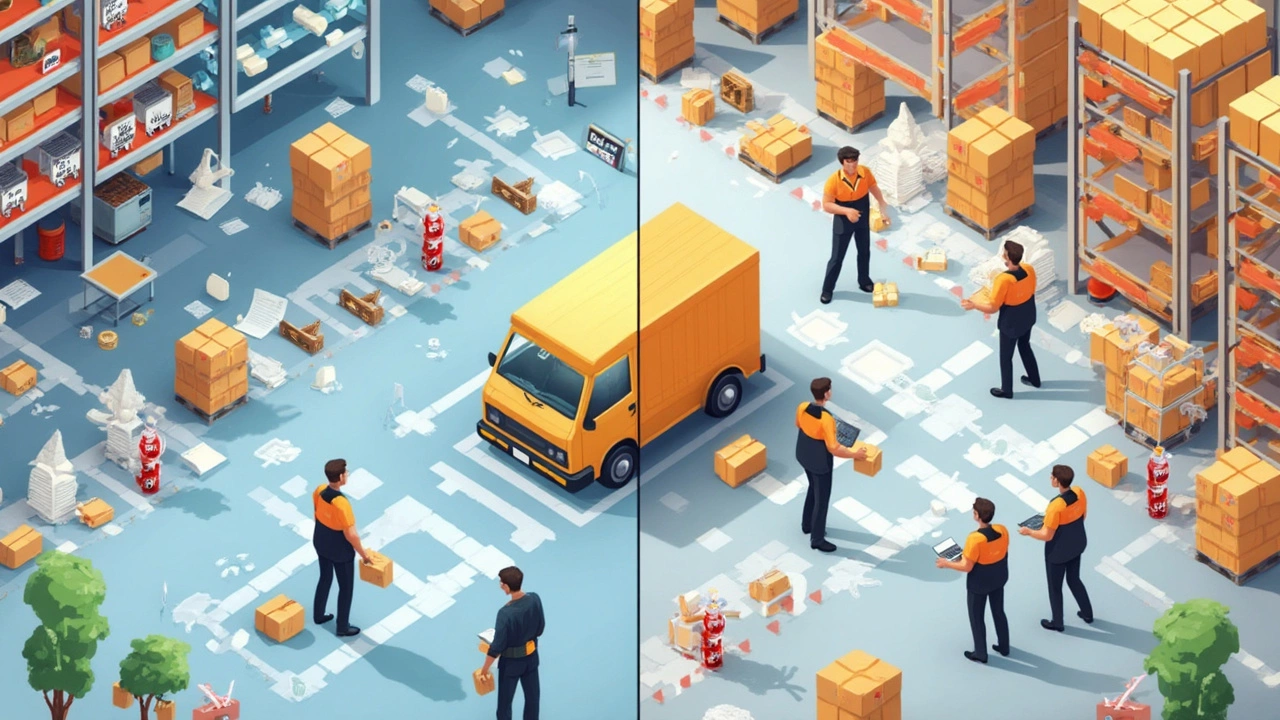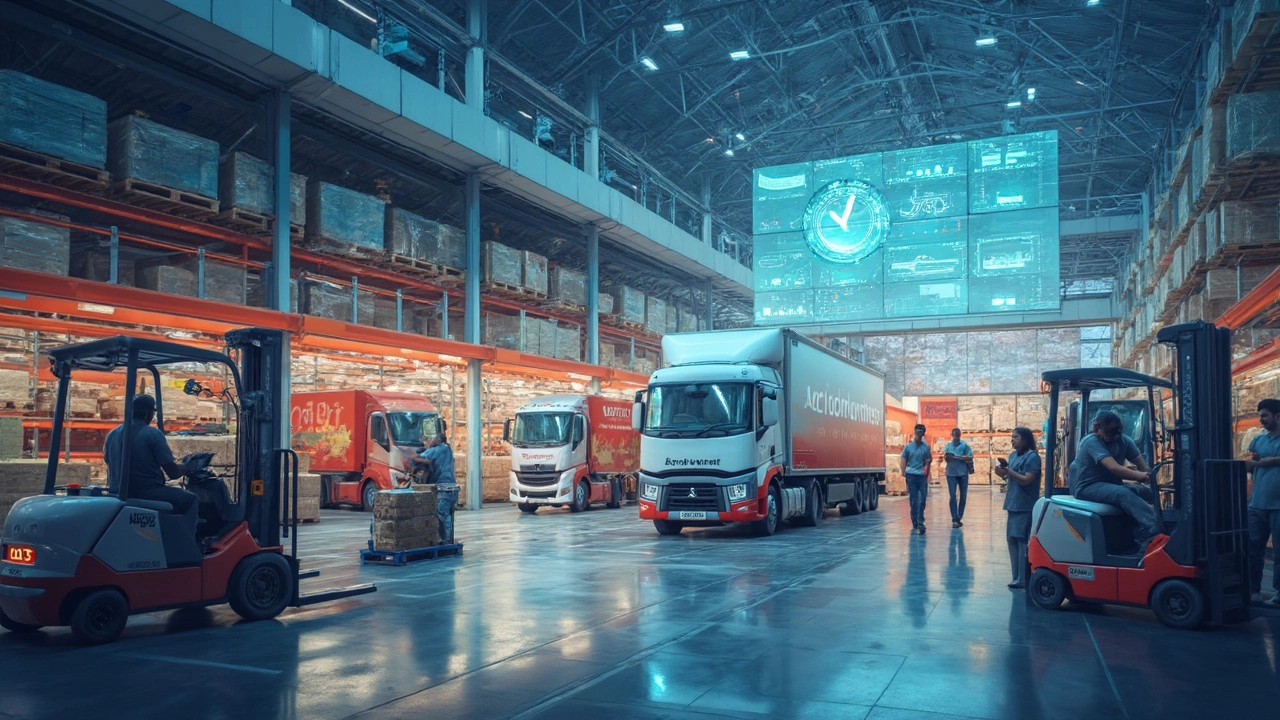If you’ve got products to ship, customers waiting, or a warehouse buzzing with activity, you’ve probably bumped into the word “logistics platform.” But what does it actually mean? Think of a logistics platform as your digital control tower. It pulls together info from every corner—inventory, shipping, delivery, and returns—so you don’t need a dozen spreadsheets or late-night calls to know where things stand.
Whether you run a local shop or juggle international shipments, logistics platforms help shrink the chaos. You might not see delivery trucks moving faster, but behind the scenes, software is making routes smarter, tracking delays, and updating you (and your customers) in real time. This software isn’t just for big corporations—smaller companies are jumping in because it makes life easier and cuts costs.
Here’s something wild: some of the latest platforms even use AI to predict when a problem might pop up, like a delivery running late or a warehouse running low on stock. This heads-up can save you headaches and prevent customer complaints. Plus, many tools are cloud-based, so you can check your orders on your phone while grabbing lunch.
- What Are Logistics Platforms?
- Key Features of Logistics Platforms
- Why Your Business Needs One
- Tips to Choose the Right Platform
- Trends and Future of Logistics Software
What Are Logistics Platforms?
When people talk about logistics platforms, they mean software that makes shipping, tracking, and managing inventory much simpler. This isn’t just about slapping barcodes on boxes. These platforms connect all the parts of the supply chain so companies have a clear, up-to-date view of their products, whether they’re sitting in a warehouse or out for delivery.
At the heart of a logistics platform is the ability to manage a ton of moving pieces. The software gathers real-time data from warehouses, trucks, shipping partners, and even customer return systems. This digital dashboard gives companies — from startups to global giants — one place to handle orders, track shipments, update delivery times, and respond quickly if anything gets off track.
Here’s a look at what a solid platform does behind the scenes:
- Automates order processing and updates the inventory across every location immediately when something sells or ships.
- Suggests the best delivery routes to save time and fuel (a big deal as gas prices jump around).
- Integrates with warehouse systems, so you never have to wonder if you’re running low on stock.
- Keeps suppliers, drivers, and customers in the loop with status updates or alerts if there’s a hiccup.
- Gathers tons of data you can use to spot trends or find weak points, so you can fix problems before they get big.
Back in 2023, a study by FreightWaves found that 82% of companies using supply chain software saw a drop in delivery delays. As the volume of packages shipped globally keeps climbing, these platforms have gone from a “nice-to-have” to a basic business tool.
You’ll notice most modern platforms are cloud-based, meaning you can check on orders while you’re out of the office—no clunky downloads or IT drama. And if you run an online store, most platforms easily plug right into Shopify, Amazon, or other storefronts, so it all works together without hassle.
Key Features of Logistics Platforms
A good logistics platform isn’t just a fancy dashboard. It packs a punch with real tools that take stress out of daily shipping and delivery. If you’re comparing options, these are the features you don’t want to miss:
- Real-time Tracking: You get updates every step of the way—when an order leaves the warehouse, hits a sorting facility, or is delivered. This takes away the guesswork and gives customers peace of mind.
- Inventory Management: No more counting boxes by hand or losing track of what’s on the shelf. The software tracks every item across multiple warehouses. Some platforms even alert you before you run out of stock.
- Route Optimization: Instead of hoping your drivers find the fastest route, the platform calculates it automatically. That means less fuel, quicker deliveries, and fewer angry customer calls.
- Automated Order Processing: Manual entries lead to errors. Good logistics software takes online orders, prints labels, and assigns shipments without you lifting a finger.
- Integration with Other Software: Today, most platforms connect smoothly with eCommerce shops, accounting software, and CRM tools so you’re not stuck re-entering data.
- Analytics and Reporting: Want to see which products tie up money in the warehouse or which routes always have late deliveries? Dashboards and custom reports spell it out, so you can make smarter calls.
Big players like FedEx and UPS weren’t the only ones using these for years. Now, smaller businesses are getting the same level of control. Here’s a look at typical time and cost savings, according to a real 2023 industry report:
| Feature | Typical Efficiency Boost |
|---|---|
| Route Optimization | Up to 25% faster deliveries |
| Real-time Tracking | Reduces "where's my order?" calls by 40% |
| Automated Order Processing | Cuts manual labor by 30% |
The new wave of logistics platforms even supports mobile access, letting staff scan barcodes with their phones or track shipments on the go. That’s huge for businesses trying to keep up with today’s speedy shoppers.

Why Your Business Needs One
If your operations involve shipping, inventory, or deliveries, there’s almost no way around it—you need a logistics platform. Here’s why. When businesses don’t use modern logistics platforms, things get messy fast. Orders fall through the cracks, inventory numbers aren’t accurate, and customers get annoyed waiting for updates. With the right software, you get all the moving parts under control.
One big win is speed. Digital solutions cut manual work, so your team isn’t stuck sending emails or double-checking spreadsheets. Some companies report reducing admin time by over 30% just by switching to a single logistics tool instead of cobbled-together systems.
Accuracy is another. When all your data lives in one place, you make fewer mistakes—less overstock, fewer missed shipments, and no more orders lost in limbo. For companies that track 1,000+ orders a month, this accuracy can mean the difference between happy customers and bad reviews.
- Supply chain software can automate how and when orders move, matching orders to the best carrier and route.
- Warehouse management is smoother since you see stock levels in real time instead of waiting for end-of-day reports.
- With delivery automation, you get updates when things are on track or delayed—which helps you fix problems before customers even find out.
Here’s a quick look at what businesses actually get out of switching to modern logistics tools:
| Benefit | How It Helps |
|---|---|
| Order Tracking | See every shipment’s status, no phone tag needed |
| Inventory Management | Double-check stock with a click, avoid running out or over-ordering |
| Delivery Speed | Faster routes and fewer delays thanks to real-time updates |
| Error Reduction | Fewer mistakes in picking, packing, and shipping |
Top brands like Amazon and Walmart use logistics platforms—and that’s a piece of their secret sauce. But the best part? You don’t need to be a giant to get the benefits. Even a small shop can see clear results: faster shipping, fewer mistakes, and happier customers who come back again and again.
Tips to Choose the Right Platform
Picking the right logistics platforms can make or break your shipping game. So before you sign up, keep a few things front of mind. It’s not just about the price tag—you need something that really fits your operation.
- Integration matters: Your new platform should play nice with your current tools. Got Shopify, QuickBooks, or a warehouse management system? Look for platforms with plug-and-play integrations, so you don’t waste hours syncing data by hand.
- Real-time tracking: Customers want updates, and so do you. Platforms with real-time tracking help you spot issues before they blow up. Bonus points if they offer mobile alerts and easy access from any device.
- Scalability: Maybe you’re small now, but growth can hit fast. Make sure the software can handle more shipments, orders, and locations without falling apart. Some big-name supply chain software brands like ShipBob and Flexport are built to scale with you.
- User-friendly dashboards: Don’t get stuck with confusing menus. Ask for a free trial and just poke around. If you can’t figure it out in five minutes, your team may be in for a headache.
- Customer support: Sooner or later, you’ll run into a glitch. Fast, helpful support makes all the difference. Find out if you’ll get a real person, or just another bot.
If you’re wondering about the cost, prices for delivery automation and warehouse management software can vary a lot. Here’s a quick comparison of average monthly fees for SMBs (2024 numbers):
| Platform | Warehouse Management | Delivery Automation |
|---|---|---|
| ShipStation | $99/mo | $69/mo |
| Flexport | $199/mo | $149/mo |
| Easyship | $49/mo | $49/mo |
Don’t just follow the crowd—talk to others in your industry. Join a few forums or LinkedIn groups and ask which platforms save time or cause headaches. Hands-on feedback matters way more than slick marketing claims.

Trends and Future of Logistics Software
The world of logistics platforms is changing super fast. What used to take a whole building full of people and paper now happens with just a few clicks and a good Wi-Fi connection. One of the biggest trends is automation. Routine stuff like scheduling shipments, finding the shortest routes, or even updating your team on delays is now handled by the software. This means fewer mistakes and way less stress for everyone involved.
Another big shift is the use of real-time data. Modern supply chain software hooks up with GPS trackers, sensors, and customer apps. So instead of guessing when a truck will show up, you actually know—right down to the minute. Some platforms can even tap into weather data or traffic jams so you get alerts before anything goes off track.
- AI and Machine Learning: Platforms are getting smarter every month. Some now analyze patterns in shipping and sales and can warn you if it looks like, say, demand is about to jump for a certain product.
- Mobile-First Tools: Folks want to check inventory or scan barcodes right from their phones. Logistics software answers this with easy-to-use apps for warehouse staff and drivers.
- Sustainability Tracking: There’s more pressure on businesses to prove they’re cutting carbon emissions. New features let you see your delivery routes’ carbon footprint and suggest greener options.
- Integration with Online Stores: With so many people shopping online, logistics platforms now plug straight into e-commerce sites so orders flow in smoothly and automatically.
Keeping up with these trends isn’t just about looking cool. Companies using modern logistics platforms are better at keeping customers happy and beating the competition on delivery speed and costs. Here’s something eye-opening: A 2024 report from Logistics Management Magazine showed that companies using AI-powered logistics software saw order error rates drop by almost 30% within the first year.
| Feature | Typical Benefit |
|---|---|
| Route Optimization | 10-15% reduced fuel use |
| Real-Time Tracking | 50% fewer customer service calls |
| Automated Inventory | 20% faster order fulfillment |
| E-commerce Integration | Better sales and fewer errors |
Looking ahead, expect logistics platforms to become even more connected. Everything from drones dropping off packages to driverless vans will need software to keep it all running smoothly. So if your business still handles logistics the old-school way, now’s the time to get on board before the gap gets even bigger.


